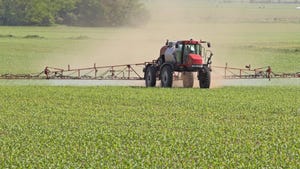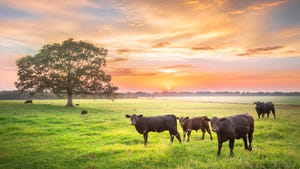October 23, 2012

In the absence of two critical issues, farm bill commodity programs would make little sense. Issue one: crop production can change considerably from year to year due to weather and disease, and issue two: over the long-haul supply increases faster than demand.
Governments as far back as second millennium BC Egypt and late first millennium B.C.-early first millennium AD China have recognized that crop failures can have a negative impact on their citizens in terms of food availability and prices and disruption to the economy. China also recognized that times of excess production could result in low price problems for its farmers.
With the opening up of the Western Hemisphere to European markets, the problem of supply increasing at a faster rate than demand began to rear its head in the U.S. and elsewhere in the New World. At first, the rate of increase of new agricultural land being brought into production was the cause of this rate differential. By the twentieth century, investment in agricultural research, education, and extension—much of it by governments—became significant factors allowing supply to increase faster than demand and leaving farmers to face long periods of low prices.
The recent drought has reminded us that issue one is still in play. But what about issue two? Over the long-run will supply out-pace demand in the years ahead, as it has typically done for centuries? In recent columns, we have described developments that suggest that despite this year’s massive drought in the U.S. and maybe as a consequence of the resulting high prices, crop agriculture may once again face long periods of low prices. But some other analysts see the future differently.
In a paper delivered at a Farm Science Review on September 18, 2012, in Ohio, one of our ag econ colleagues, Luther Tweeten, argued that “the era of falling real prices of food is over.” Tweeten wrote, “two ‘megatrends’ are underway, one on the food supply side and another on the food demand side.”
Tweeten begins by looking at food supply, writing that “U.S. excess production capacity totaled 6 percent in 1962 and averaged near that proportion throughout the 1960s. In sharp contrast, excess production capacity in U.S. agriculture today is near zero.” While seeing the 2012 drought as “transitory,” he says if global warming is underway, we may see “unusual weather events such as storms and drought.”
Falling rate of productivity increase
“Of greater concern,” he writes, “is the falling percentage rate of increase in agricultural yield and productivity. Yields of cereals such as corn, wheat, and rice that supply two thirds of our calories increased at a trend rate of 3.2 percent per year in 1962 but by only a 1.2 percent per year trend rate in 2012!” Combining “world crop and livestock productivity,” Tweeten calculates a “trend rate of 2 percent per year in 1962, and 1 percent per year in 2012!”
Citing an International Monetary Fund study that catalogued more than 800 million acres of land worldwide that could be brought into production, Tweeten argues that “those acres will not go into gainful crops without substantial investment in roads, irrigation, fertilizers, drainage, property rights, law and order, etc. Those investments will not be forthcoming in the absence of higher crop prices. Meanwhile, about as much cropland will be lost to urban development, soil degradation, depleted water tables for irrigation, biofuel crops, etc. as is likely to be added each year.”
On the demand side, Tweeten, in acknowledging a slowing down in the rate of population, sees a 2012 trend rate in the growth of total food demand of 1.3 percent per year, 0.8 percent per year lower than it was in 1962 and higher than the 1 percent per year increase in world crop and livestock productivity.
He concludes: “In short, unless there is an unexpected increase in global cropland, future food demand is likely to grow faster than food supply—a considerable turnaround from 1962 when food supply growth sharply outstripped demand growth. Real prices of farm food ingredients projected to rise on average by1 percent per year in future decades contrast considerably with real farm prices decreasing 1percent per year on average in the 1960s. In conclusion, the above is no counsel of Malthusian despair—American consumers will hardly notice the trend reversal, but living standards will be retarded, especially in poor countries.”
If Tweeten’s analysis is correct, commodity programs designed to soften the price and income blows caused by supply generally out-stripping demand, would no longer be needed—the yield variability issue would remain, of course.
Not much change
We look at the same data as Tweeten and, given the price and political incentives to increase agricultural production—both in terms of area under cultivation and investments to increase yields worldwide—we think it is likely that the relative rates of growth in supply and demand will be much as they have been in past.
That is, rather than seeing a reversal, the odds are still in favor of supply growing faster than demand as farmers and governments fully adjust productive capacity.
Then the question is: would the resulting low prices cause the quantity demanded and supplied to recalibrate in a way that would rapidly adjust agriculture to reasonable profitable prices and revenues. Over the last many decades, it has been lack of rapid adjustment to low prices caused by supply shifting faster than demand that has been the overriding reason for commodity programs.
Daryll E. Ray holds the Blasingame Chair of Excellence in Agricultural Policy, Institute of Agriculture, University of Tennessee, and is the Director of UT’s Agricultural Policy Analysis Center (APAC). Harwood D. Schaffer is a Research Assistant Professor at APAC. (865) 974-7407; Fax: (865) 974-7298; [email protected] and [email protected]; http://www.agpolicy.org
You May Also Like




